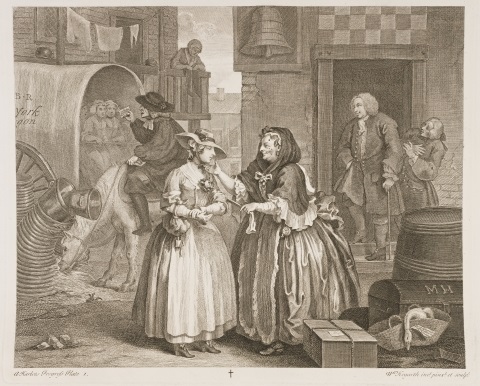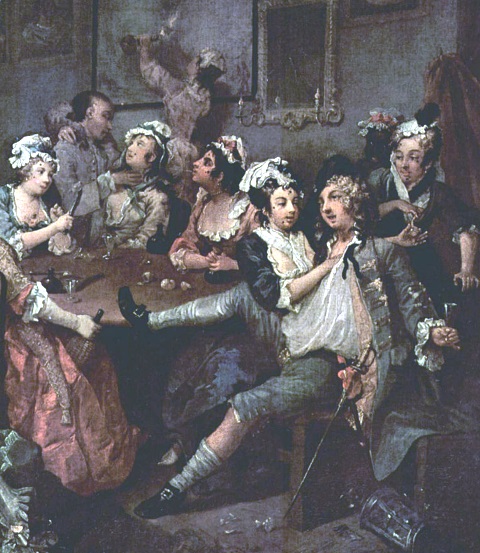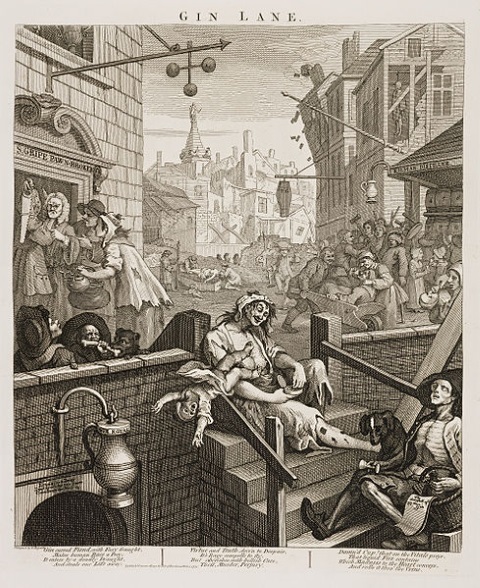18th century Georgian Britain was a nation openly and often shockingly rude, especially to 21st century eyes. A gifted commentator on his times, the artist William Hogarth’s brilliant satirical and sometimes brutal works transport us back to that time.
Hogarth was a clever businessman, managing to secure a good income from selling engravings of his paintings. At one guinea (£1.05) each, these engravings made Hogarth’s work accessible to people from the middle and lower classes who previously could not afford to buy art.
His work highlights two types of 18th century society. On the one hand his portraiture reflects the civilised world of the modest country gentleman whilst on the other, his satirical works feature the seedy, coarse and debauched side of urban society. Hogarth’s London is a vibrant cacophony of sights, sounds and smells and is skilfully brought to life in his paintings and engravings.
Hogarth was heavily influenced by his middle-class upbringing. Born in London, he was the son of an unsuccessful schoolmaster and writer. A childhood spent in a debtor’s prison had left him sympathetic towards the poor and mistrustful of the wealthy. He became more and more concerned with what he saw as the deterioration of British morals.
Hogarth is particularly well known for his series of pictures called ‘modern moral subjects’. The following selection of three of his better known works illustrates the dark, comic humour and moralistic tone behind these paintings with their openly sexual and graphic images.
Prostitution in Georgian London was rife, so much so that in 1732 Hogarth created the hugely successful ‘A Harlot’s Progress’, a satirical series of six works of art telling the story of a young woman arriving in town from the country and being lured into a life of prostitution: a tale of sex trafficking in 18th century London if you like.

The eight paintings in Hogarth’s ‘A Rake’s Progress’ (1733) tell the story of Tom Rakewell, a young man who follows a path of dissipation, lechery and self-destruction after inheriting a fortune from his father.


A popular artist during his lifetime, Hogarth’s work was highly influential. His paintings of contemporary scenes tell us much about 18th century life. However perhaps his greatest legacy is that out of his work arose the ‘comic strip’ that we know today.
For more examples of Hogarth’s work, please see http://www.bbc.co.uk/arts/yourpaintings/paintings/william-hogarth
No comments:
Post a Comment